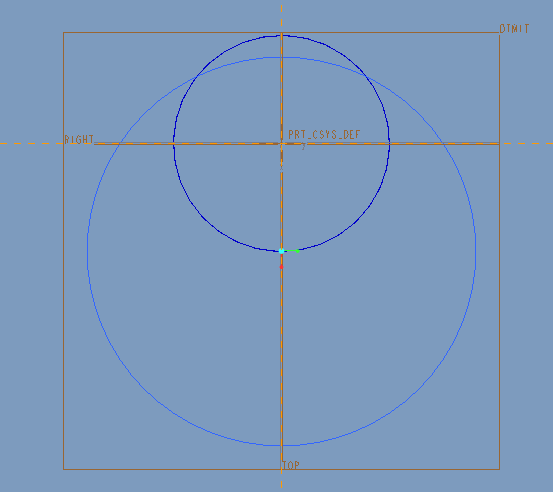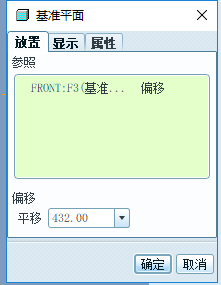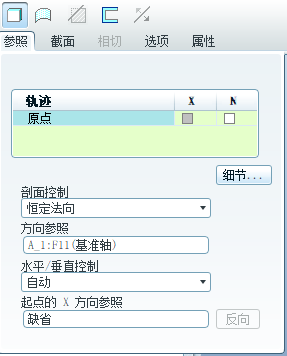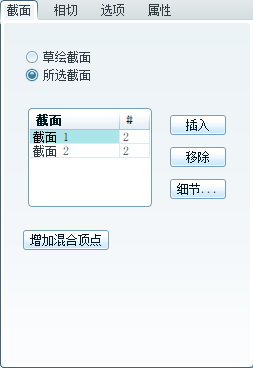螺杆泵设计及其性能分析毕业论文
2020-04-15 17:44:46
摘 要
螺杆泵的本质是容积泵的一种,它是一种高效的能量转换设备,以其占地面积小、噪声小和节能等优点成为世界各大油田首选的举升设备。短短几十年螺杆泵的设计制造技术得到了迅猛的发展。然而石油开采的环境恶劣:温度跨度大、压力大,因此研究螺杆泵的运动规律很有必要。本文主要研究单螺杆泵的性能。
本文基于螺杆泵的运动规律和工作原理,以一台流量为 ,出口压力为
,出口压力为 的螺杆泵为设计对象。基于
的螺杆泵为设计对象。基于 软件建立单螺杆泵的三维模型,在三维状态下将螺杆泵进行组装,对螺杆泵进行运动分析,研究其运动规律;并基于
软件建立单螺杆泵的三维模型,在三维状态下将螺杆泵进行组装,对螺杆泵进行运动分析,研究其运动规律;并基于 有限元方法模拟螺杆泵密封性能。主要工作和结论如下:
有限元方法模拟螺杆泵密封性能。主要工作和结论如下:
(1)基于单螺杆泵的工作原理,设计出了转子直径为 ,偏心距为
,偏心距为 ,导程
,导程 ,衬套为
,衬套为 的单螺杆泵。
的单螺杆泵。
(2)使用 软件建立定子和转子的三维模型,并进行组装。通过其中的机构模块进行模拟仿真分析。选取转子表面的三个点分别对它们的位移、速度、加速度进行分析,结果如下:①三个点的运动周期都为转子旋转一周的时间
软件建立定子和转子的三维模型,并进行组装。通过其中的机构模块进行模拟仿真分析。选取转子表面的三个点分别对它们的位移、速度、加速度进行分析,结果如下:①三个点的运动周期都为转子旋转一周的时间 ,各个点的位移都呈现正弦或余弦的变化规律,随着点的位置不同,最大位移也不同,所以转子的运动轨迹为不同大小的椭圆。②三个点速度的最大最小值都相同,因为点的位置不同,所以形成曲线的初相位不同。③当转子上移到最上端或下移到最下端时,加速度最大。随着点下移,加速度的最大值减小。
,各个点的位移都呈现正弦或余弦的变化规律,随着点的位置不同,最大位移也不同,所以转子的运动轨迹为不同大小的椭圆。②三个点速度的最大最小值都相同,因为点的位置不同,所以形成曲线的初相位不同。③当转子上移到最上端或下移到最下端时,加速度最大。随着点下移,加速度的最大值减小。
(3)基于有限元软件建立了0°、45°、90°三个不同位置的二维几何模型,分析了螺杆泵在三对不同压力作用下的变形 、受力及接触情况。结果表明:随着两腔体间的压差不断增大,变形图的最大位移也不断增大,接触应力不断减小,最终其与转子的接触处产生开口间隙,接触应力为0,螺杆泵发生泄漏。而且,处于不同相对位置的定转子发生泄漏时的压差不同。
关键词:螺杆泵 有限元分析 运动仿真 运动分析
Abstract
Screw pump is a kind of displacement pump. It is an efficient energy conversion equipment. It has become the preferred lifting equipment for all major oil fields in the world due to its small footprint, low noise and energy saving. In just a few decades, the design and manufacturing technology of screw pumps has developed rapidly. However, the environment for oil exploitation is harsh: the temperature span is large and the pressure is high. Therefore, it is necessary to study the motion law of the screw pump. This paper focuses on the performance of single screw pumps.
Based on the design method of screw pump, a screw pump with a flow rate of 3 m/h and an outlet pressure of 0.13 MPa is designed in this paper. Based on Pro/E software, the three-dimensional model of single screw pump is established, and the screw pump is assembled in three-dimensional state. The sealing performance of the screw pump is simulated based on ANSYS finite element method. The main work and conclusions are as follows:
(1)Based on the design and calculation of single screw pump,a single screw pump with a rotor diameter of 36 mm, an eccentricity of 10 mm, a lead of 144 mm and a bushing of 288 mm was designed
(2)Using Pro/E software, the three-dimensional model of stator and rotor is built and assembled, and the simulation analysis is carried out through the mechanism module. The results are as follows: ① The motion period of three points is the time when the rotor rotates for one week. The displacement of each point shows the variation of sine or cosine. The maximum displacement is different with the position of the point, so the motion track of the rotor is different. The size of the ellipse. ② The maximum and minimum values of the three point speeds are the same, because the positions of the points are different, so the initial phase of the curve is different. ③ When the rotor moves up to the top or down to the bottom, the acceleration is maximum. As the point moves down, the maximum value of the acceleration decreases.
(3) Based on the finite element software, the two-dimensional geometric models
of 0, 45 and 90 positions are established, and the deformation, stress and contact of the screw pump under three different pressures are analyzed. The results show that as the pressure difference between the two chambers increases, the maximum displacement of the deformation diagram increases, and the contact stress decreases. Finally, the contact gap between the two chambers and the rotor occurs. The contact stress is 0, and the screw pump leaks. Moreover, the pressure difference of stator and rotor in different relative positions is different when leakage occurs.
Keywords:screw pump;Finite Element;Analysis;Motion simulation;kinematic analysis
目录
摘要 I
Abstract II
第一章 绪论 1
1.1介绍螺杆泵的发展 1
1.1.1螺杆泵的用途和发展历史 1
1.1.2 单螺杆泵的运动原理和结构 1
1.2 本文的主要研究思路及用到的软件 3
1.2.1  对螺杆泵设计的应用 3
对螺杆泵设计的应用 3
1.2.2  软件对螺杆泵的应用 3
软件对螺杆泵的应用 3
1.3 近年来国内外对螺杆泵的研究探索 3
1.3.1国内研究 3
1.3.2 国外研究 4
1.4 本章小结 5
第二章 单螺杆泵的设计计算 6
2.1单螺杆泵的设计计算 6
2.1.1单螺杆泵的螺杆和衬套的结构参数确定 6
2.1.2螺杆和衬套的齿廓 8
2.1.3螺杆和衬套工作表面积和容积的确定 11
2.1.4计算轴向力 12
2.2螺杆和衬套的材料 14
2.3本章小结 15
第三章 单螺杆泵的建模和运动仿真及运动分析 16
3.1转子的建模 16
3.2定子的建模 20
3.3单螺杆泵的定子与转子的装配 24
3.4创建运动仿真模型 26
3.4.1运动轨迹的分析 26
3.4.2添加伺服电动机 28
3.5运动学仿真分析 31
3.5.1螺杆外表面上点的运动轨迹 31
3.5.2螺杆上 三点的位移、速度和加速度 31
三点的位移、速度和加速度 31
3.6 本章小结 35
第四章 基于ANSYS的螺杆泵密封性分析 37
4.1基于 建立二维几何模型 37
建立二维几何模型 37
4.2 划分网格 41
4.3 加载计算 44
4.4 结果分析 48
4.5 本章小结 70
第五章 总结展望及经济评价 72
5.1总结 72
5.2 展望 73
5.3 经济评价 73
5.3.1 投资估算 73
5.3.2资金筹措 73
5.3.3 所需费用明细 73
参考文献 75
致谢 78
第一章 绪论
1.1介绍螺杆泵的发展
1.1.1螺杆泵的用途和发展历史
螺杆泵是凭借螺杆和衬套形成密封腔的容积变化来吸入或排出液体。应用于化工、石油、造船等领域,能在运行过程中实现匀速传递介质和保证恒定的容积。
本文主要研究单螺杆泵的性能,单螺杆泵是1923年由法国工程师Moineau发明,并由德国PCM[1]泵公司制成产品。单螺杆泵的适用范围相当广泛,输送液体的粘度范围相当大,不但可以输送清水,还可以输送原油、纸浆、污泥、果酱等粘稠液体,也可输送含有气体或易产生气泡的液体以及有固体含量的液体,所以广泛应用于食品、纺织、造纸、石油、化工、造船、建筑、冶金、矿山、发电等各个工业领域[2]。
1.1.2 单螺杆泵的运动原理和结构
单螺杆泵主要由定子和转子组成,其余各个部分如图1-1。
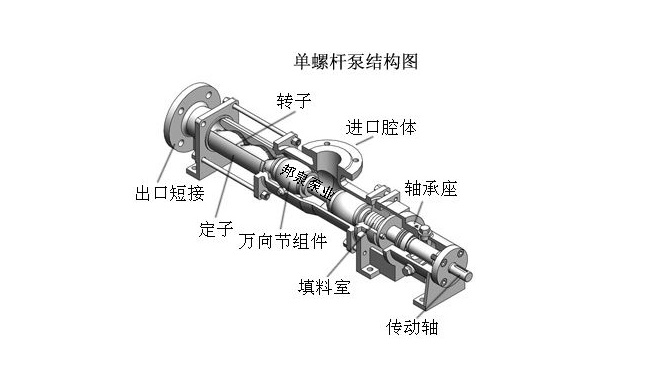
以上是毕业论文大纲或资料介绍,该课题完整毕业论文、开题报告、任务书、程序设计、图纸设计等资料请添加微信获取,微信号:bysjorg。
相关图片展示:
